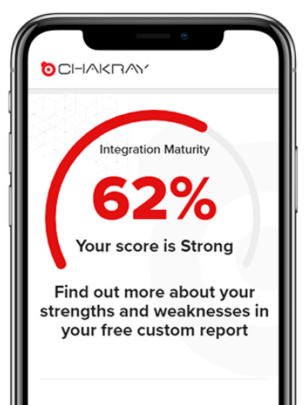The current global pandemic is forcing everyone to think differently. As with all situations of chaos there will be opportunities for those that can adapt and disaster for those that cannot.
In this article we will explore how businesses should position their thinking to be on the front foot, prioritising Digital Agility in this time of uncertainty rather than retreating to a “keep the lights on” model in the hope things will go back to normal.
A Cultural Revolution Driving Technology Adoption
We are all familiar with the technology adoption life cycle. New technology is embraced by early adopters before eventually becoming mainstream.
In this way we see technology driving our cultural revolutions, from the first online commerce transactions, to banking, dating and social media. If a technology is good, it gains traction which in turn influences our behavioural patterns and changes our culture.
What is unusual about this period of COVID-19 pandemic is that it is likely to be a cultural revolution that drives our technology adoption.
We are required to learn to work from home effectively. We are forced to do more of our socialising, banking, shopping and entertaining online. Amazon, Slack, Netflix, ESports, Supermarket Deliveries are all seeing an enormous surge in demand and interest, not just from their established user base, but by new customers who are now forced to develop new habits.
This period will drive the late adopters and laggards into the mainstream and create new habits that will endure well beyond the time we are finally able to enjoy that social glass of Pinot with our friends again.
Think about the elderly relatives or neighbours receiving their first online supermarket deliveries. Think about the ways we are socialising with our friends in the evenings and weekends. Think about the home improvements we are planning without visiting a showroom or department store.
This cultural change is happening right now, in our homes, and we are all part of it.
We will all be more concerned about viral transmission, and that will have lasting influence on our social, shopping and dining culture. We will all be more used to remote working and that will change our work culture. We will all be more used to running our lives online, and that will change our business culture.
Why Prioritise Digital Agility?
The message here is simple and clear. Now is absolutely the time that organizations need to be ready to present increasing digital capabilities and experiences to their customers.
If each time we want to improve our digital offering we must navigate multiple systems, write new rules, establish new access rights and tread carefully around existing dependencies, even the simplest initiatives can become huge, expensive, time consuming technology projects. When your competition can bring 10 ideas to market to improve upon the customer experience, iterate them, refine them and move on before you can deliver 1 project, it is clear who is likely to succeed and who will not.
So how does an organisation position itself to meet these digital challenges and opportunities head on? We don’t have time or budget to redesign and rebuild all of our IT around a new paradigm, so how can we begin to offer the right customer experience? How can we start delivering the tracking, paying, ordering, organising, enquiring, upgrading, administering, exploring, reserving, returning, cancelling, comparing and customising features our users want?
To Become Digitally Agile, We Must Become Integration Agile
We achieve Digital Agility by empowering our teams for self organising iterative delivery, exposing our existing IT systems to allow new capabilities to be developed in a safe, controlled, efficient and organised way. This is your Integration Agility.
Whether that means you need to implement an Enterprise Integration solution, an Identity and Access Management solution or increasingly typically an API Management solution. These are the building blocks of a modern agile technology practise in any organisation, and with this in place we can begin to build quickly upon our digital service offerings to improve or augment the customer experience.
Using these established concepts, you can:
- You can prepare your organisation to innovate and iterate new ideas.
- You can react, get to market quickly, fail fast and succeed swiftly.
- With these building blocks you can unlock the creativity of your developers, your marketers, your business leaders and even third parties to focus on the progressive improvements you want to make as a business.
The Good News About Integration Agility
Never before has it mattered more to be an organisation that embraces digital, that can pivot, adapt and iterate. These agile qualities, which until recently defined only the most pioneering and disruptive companies, will become standard characteristics for any business that wants to survive and flourish in this evolving cultural and technological revolution.
Whilst this can all seem quite daunting to those organisations that are still behind the digital and integration agility curve, there is of course good news. The technologies and methodologies that organisations need to adopt in order to carve out digital market share already exist. They’ve been tried and tested, and the hard work has been done in imagining what is possible and establishing what works. There is little need for any organisation to embark on a long inward looking journey of “trial and error” as they seek to become more digitally agile.
Act Now, prioritised your digital agility
It’s been clear for a long time that all organisations must eventually fully embrace their potential digital offering to remain relevant in the long term. The important thing that has changed, is that “eventually” means now. For some it is already too late, and for the rest of us, the warning is here, the evidence is clear and we must act.
This period of COVID-19 is creating vast new market share for businesses that have prioritised their digital capability and organised themselves to be agile and react.
In contrast it will further diminish market share for those organisations that rely on traditional models and are not organised for such change. We are already witnessing the collapse of many companies with a strong reliance on physical interaction.
For those less technologically embracing organisations who are able to ride out this storm, they will still be faced with a different looking population of more technology savvy customers. Things will never “go back to normal” because what is considered normal is about to change.
So we can all be forgiven for being caught by surprise with this sudden and extreme situation we face today. Next time we won’t be forgiven, because the lessons are there to be learned, and the direction of travel for consumer habits clear. Moving forward, our staff, our customers and our shareholders will expect our business and IT leaders to answer this question: Why aren’t we ready?








